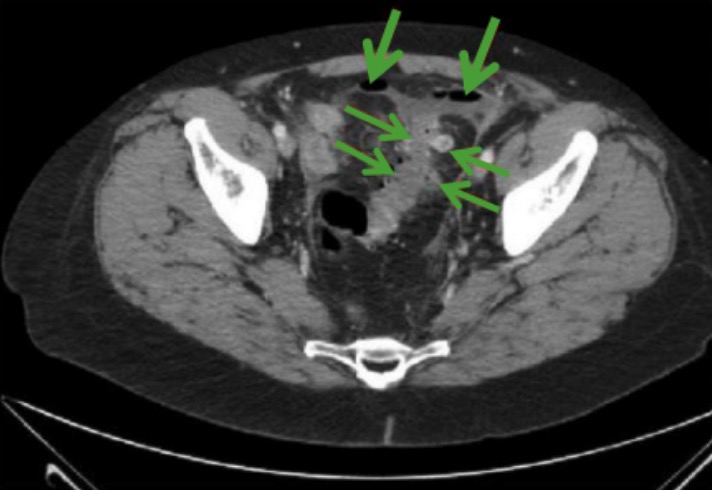Playlist
Show Playlist
Hide Playlist
Angiodysplasia
-
Slides Small and large bowel.pdf
-
Download Lecture Overview
00:01 We will begin our discussion by looking at angiodysplasia. 00:04 Allow the name to speak to you. Angio means blood vessels. 00:07 Lots of blood vessels in your GI system. 00:09 And then blood vessels are undergoing dysplasia. 00:13 Another time in which you've heard of your dysplastic changes taking place in your blood vessel is that young lady, approximately 30 years of age, who was then presenting with secondary hypertension and upon auscultation you hear renal bruits. 00:29 And that is referring to as your fibromuscular dysplasia, right? So you have heard of dysplasia before, in fact you have heard of dysplasia take place in blood vessels before, and that was in renal already that was taking place in that young female. 00:44 Here however, we have acquired vascular ectasias associated with aging. 00:51 So what happens is that the blood vessels are in fact undergoing dysplastic change and actual dilation and may result in a flat, red lesion seen on colonoscopy most in the cecum and the ascending colon, therefore resulting in painless rectal bleeding, associated with chronic renal failure and also valvular heart disease such as a aortic stenosis. 01:19 Angiodysplasia, a common cause, a very common cause of painless rectal bleeding in the United States. 01:26 Management: Cautery. Doing colonoscopy of acute bleeding, iron supplementation because you can expect that bleeding, of course, resulting in iron deficiency. 01:40 Estrogen therapy. Remember estrogen is prothrombotic, you want to stop this bleeding. 01:45 If you take a look at the picture, you will notice that there is upon colonoscopy, you will notice that there is blood patches just as you would expect when you are looking for the source of your painless rectal bleeding in an elderly patient. 02:04 These are ectasias that are taking place of the blood vessels resulting in rupture and then bleeding.
About the Lecture
The lecture Angiodysplasia by Carlo Raj, MD is from the course Small and Large Intestine Diseases: Basic Principles with Carlo Raj.
Included Quiz Questions
What are the colonoscopic findings in angiodysplasia of the colon?
- Flat, bright-red lesions mostly on the cecum and ascending colon
- Golden-brown membrane-like patches in the colon
- Cobblestone appearance of the colon
- Red, velvety, and friable, diffusely involved lesions all over the colon
- Ulceroproliferative-like growth in the sigmoid colon
Which heart disease is associated with angiodysplasia of the colon?
- Aortic stenosis
- Aortic regurgitation
- Mitral stenosis
- Mitral regurgitation
- Patent ductus arteriosus
Which of the following is NOT related to the management of angiodysplasia?
- Plain X-ray
- Identification of the lesions of angiodysplasia on colonoscopy
- Cautery of angiodysplastic lesions visualized on a colonoscopy
- Iron supplementation
- Estrogen therapy
Which type of defect in the blood vessel causes angiodysplasia of the colon?
- Vascular ectasia
- Hemangioma of a blood vessel
- Infarction
- Thrombus formation in the blood vessel
- Embolization of the blood vessel
Customer reviews
5,0 of 5 stars
| 5 Stars |
|
5 |
| 4 Stars |
|
0 |
| 3 Stars |
|
0 |
| 2 Stars |
|
0 |
| 1 Star |
|
0 |




